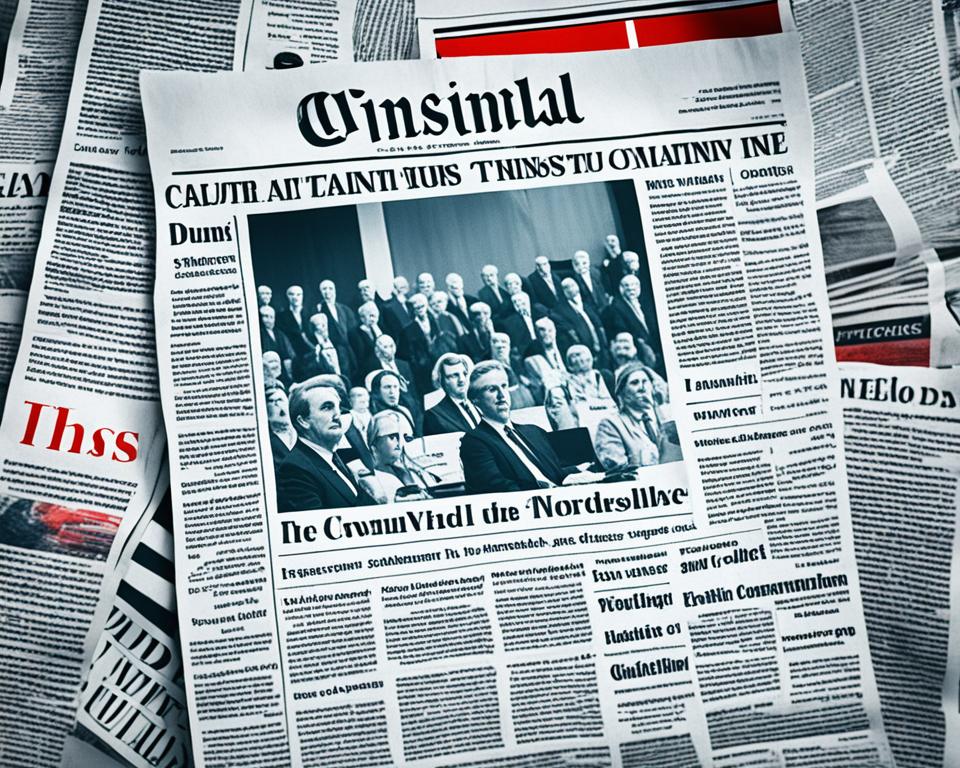In the digital age, the rapid spread of disinformation, fake news, and misinformation campaigns has become a significant challenge for media organizations striving to deliver accurate and trustworthy information. The emergence of disruptive new technologies, such as the internet, web 2.0, and social media, has transformed how information is accessed, produced, communicated, and shared. This digital revolution, accelerated by the widespread use of smartphones, has democratized knowledge and opened new channels for communication. However, it has also exacerbated the longstanding problem of disseminating news with low scientific rigor, false information, and rumors that can generate disinformation among readers.
Misinformation often spreads rapidly online, sometimes becoming more popular than factual, evidence-based information. Factors like personal opinions, negative emotions, and the influence of social media “influencers” contribute to the virality of misinformation. The proliferation of online propaganda and social media manipulation tactics has further undermined the public’s trust in mainstream media, leading to the emergence of an “information disorder” that poses a significant threat to democratic discourse and the integrity of the news ecosystem.
In this digital landscape, media organizations must grapple with the challenges of combating disinformation, implementing effective digital fact-checking strategies, and fostering a culture of media literacy and critical thinking among their audience. The battle against information warfare requires a multifaceted approach that addresses the technological, psychological, and societal factors driving the spread of misinformation. As the media industry navigates this complex and ever-evolving digital terrain, it must remain steadfast in its commitment to upholding the principles of journalistic integrity and delivering reliable news that empowers citizens to make informed decisions.
The Rise of Fake News and Misinformation Campaigns
In the digital age, the proliferation of fake news and misinformation has become a significant challenge for media outlets and the public. The 2016 Brexit vote in the UK and the U.S. presidential election highlighted how new information platforms can feed people’s instinct to seek out content that aligns with their perspectives, making them vulnerable to accepting and acting on misleading or false information.
Defining Fake News and Misinformation
Fake news refers to fabricated stories or information presented as factual, often with the intent to mislead or deceive. Misinformation, on the other hand, is the unintentional spread of false or inaccurate information. Both can have significant consequences, as evidenced by the report that Ethereum’s founder Vitalik Buterin had died in a car crash, which caused a temporary drop in the cryptocurrency’s value.
The Impact of Social Media on Spreading Misinformation
Social media platforms have played a crucial role in the rapid spread of fake news and misinformation. These digital information channels provide a fertile ground for the circulation of false narratives, as users often share content without verifying its accuracy. Experts argue that the breakdown of trusted information sources and the “new shape of truth” where facts and counterfeits appear identical online is a major challenge in the 21st century.
| Platform | Misinformation Prevalence | Efforts to Combat Fake News |
|---|---|---|
| Significant issues with the spread of fake news and misinformation | Partnering with fact-checking organizations, reducing the distribution of false content, and increasing transparency around political ads | |
| Widespread problem with the rapid spread of misinformation | Implementing policies to identify and remove coordinated disinformation campaigns, labeling misleading content, and promoting authoritative sources | |
| YouTube | Concerns about the platform’s role in the propagation of conspiracy theories and false claims | Adjusting recommendation algorithms to limit the spread of borderline content and providing information panels to direct users to reliable sources |
As the digital landscape continues to evolve, the challenge of combating fake news and misinformation campaigns has become increasingly complex. Media outlets, social media platforms, and the public must work together to promote media literacy, fact-checking, and a culture of critical thinking to navigate the treacherous waters of the information disorder.
Why Disinformation Spreads Rapidly Online
The rapid spread of disinformation online is driven by a combination of human psychology and technological factors. Experts suggest that the primal human quest for success, power, and comfort, along with the tendency to reinforce existing beliefs in echo chambers, make people susceptible to manipulative actors using new digital tools.
Human Psychology and the Allure of Sensationalism
Human beings are naturally drawn to sensational and emotionally-charged content, as it triggers a stronger emotional response and a sense of urgency. Disinformation peddlers often capitalize on this psychological vulnerability, crafting stories that are attention-grabbing, polarizing, and highly shareable. The human craving for comfort and confirmation of existing beliefs further fuels the rapid spread of these sensationalized narratives online.
The Role of Bots and Automated Accounts
Technological advancements have also played a significant role in the rapid dissemination of false and sensationalized content. Bots and automated accounts can be programmed to quickly create and share disinformation at scale, often amplifying the reach and impact of these manipulative tactics. The speed, reach, and efficiency of the internet and emerging online applications magnify these human tendencies, making it challenging for technology-based solutions to keep up.
To combat the spread of disinformation, a multifaceted approach is necessary, addressing both the psychological and technological factors that contribute to its rapid propagation online.
| Factor | Impact on Disinformation Spread |
|---|---|
| Human Psychology | Susceptibility to sensationalism, echo chambers, and confirmation bias |
| Technological Advancements | Bots, automated accounts, and the speed and efficiency of online platforms |

“The rapid spread of disinformation online is driven by a combination of human psychology and technological factors.”
Human Psychology, Sensationalism, Bots, Automated Accounts, Online Manipulation, Viral Content
Disinformation in the Digital Age
In the digital era, the rise of “fake news” and the proliferation of doctored narratives spread by humans and bots online have become significant challenges for media organizations and information consumers alike. The digital information ecosystem has enabled the rapid dissemination of digital disinformation, often outpacing the ability of platforms and fact-checkers to contain its spread.
Experts are divided on whether trusted methods will emerge to block false narratives and allow the most accurate information to prevail in the overall online information environment, or if the quality and veracity of information online will deteriorate due to the spread of unreliable and socially destabilizing ideas.
Those attempting to address the challenge of digital disinformation are working to design technical and human systems that can identify and minimize the ways in which bots and other schemes spread lies and misinformation. However, the task is complex, as the speed and scale of information sharing on digital platforms can quickly amplify the reach of false narratives.
| Strategies to Combat Digital Disinformation | Challenges Faced |
|---|---|
|
|
As the battle against digital disinformation continues, it is clear that the information ecosystem has been fundamentally altered, and the quest for reliable, fact-based news in the digital age remains an ongoing challenge for both media organizations and the public.
“The spread of misinformation and disinformation online has become a critical threat to the integrity of our information ecosystem, undermining public trust and fueling social division.”
Consequences of Unchecked Misinformation
The unchecked spread of misinformation poses significant threats to public health, political stability, and social cohesion. As misinformation campaigns continue to gain momentum in the digital age, the consequences can be far-reaching and deeply concerning.
Public Health Risks
One of the most alarming consequences of misinformation is the impact it can have on public health. Misinformation can lead to the abandonment of effective medical treatments, the rejection of scientifically-backed vaccination recommendations, and the adoption of unproven or even dangerous alternative therapies. This undermines public trust in healthcare professionals and can have severe consequences, potentially leading to the resurgence of preventable diseases and compromising overall community wellbeing.
Political and Social Destabilization
The dissemination of misinformation can also have far-reaching political and social implications. Fake news and disinformation campaigns can sow discord, erode trust in democratic institutions, and fuel political polarization. This can ultimately lead to social instability, civil unrest, and the weakening of the foundations of a healthy, functioning society.
Experts warn that the problem of misinformation must be constantly monitored and addressed, as those who seek to deceive will adapt to any changes made by platform companies and fact-checkers. The battle against misinformation requires a multifaceted approach, including strengthening digital literacy, enhancing fact-checking efforts, and implementing effective regulations to curb the spread of harmful content online.
“The spread of unreliable, sometimes even dangerous, socially destabilizing ideas can have far-reaching consequences, including political and social destabilization.”
Combating Disinformation: Strategies and Challenges
In the face of the growing disinformation crisis, experts have proposed various strategies to combat the spread of false information and promote reliable news. These approaches focus on fact-checking initiatives, digital literacy programs, and regulations governing social media platforms.
Fact-checking and Digital Literacy Initiatives
Fact-checking organizations play a crucial role in verifying the accuracy of online content and debunking false claims. By identifying and calling out disinformation, these initiatives help to restore trust in the media and empower citizens to make informed decisions. Alongside fact-checking, improving digital literacy among the general public is essential. Educational programs that teach critical thinking skills and media analysis can equip individuals to navigate the digital landscape more effectively and recognize misinformation when they encounter it.
Regulating Social Media Platforms
Experts also emphasize the need for stricter social media regulation to combat the spread of disinformation. This may involve implementing policies that require platforms to promptly remove verifiably false content, enhance content moderation, and increase transparency around political advertising and bot activity. However, striking the right balance between regulation and preserving free speech remains a significant challenge in this ongoing debate.
While these strategies offer promising solutions, experts acknowledge that the battle against disinformation is far from over. As those seeking to deceive adapt their tactics, the fight to maintain a well-informed and resilient citizenry requires constant vigilance and a willingness to adapt to new and emerging threats.
“The fight against disinformation is an ongoing battle, one that requires a multifaceted approach and a steadfast commitment to preserving the integrity of information in the digital age.”
The Future of Reliable News in the Digital Landscape
As the digital news landscape continues to evolve, the quest for reliable information has become increasingly complex. Experts are divided on the future of the information environment in the next 10 years, with some believing that technological fixes can be implemented to improve the quality of digital news, while others remain more pessimistic.
On the optimistic side, proponents argue that advancements in artificial intelligence, machine learning, and fact-checking tools can help combat the spread of misinformation and fake news. By leveraging these technologies, media outlets and social media platforms could more effectively identify and flag dubious content, empowering users to make more informed decisions about the information they consume.
However, the pessimists counter that the fake news ecosystem preys on deep human instincts, such as our propensity for sensationalism and confirmation bias. They argue that the pace of technological change often outpaces our ability to contend with the challenges it poses, making the problem of misinformation a persistent social condition that requires constant monitoring and adjustment.
Regardless of the outlook, most experts agree that the future of reliable news in the digital landscape will require a multifaceted approach. This may include:
- Strengthening media literacy programs to empower individuals to critically evaluate the information they encounter online
- Implementing robust fact-checking mechanisms to identify and debunk false narratives
- Encouraging greater transparency and accountability from social media platforms and technology companies
- Fostering collaboration between media organizations, policymakers, and the public to develop effective strategies for combating misinformation
As the digital news landscape continues to evolve, the need for reliable, trustworthy information has never been more crucial. By addressing the challenges posed by misinformation and embracing innovative solutions, we can work towards a future where the public can navigate the digital information environment with confidence and discernment.

Fostering a Culture of Media Literacy and Critical Thinking
In the digital age, where information can spread rapidly across social media and online platforms, it is crucial to empower citizens with the skills to discern fact from fiction. Experts emphasize the need to foster a culture of media literacy and critical thinking to combat the pervasive issue of disinformation.
Media literacy education equips individuals with the ability to analyze, evaluate, and understand the various forms of media they encounter daily. By teaching people to question the source, content, and intent behind online information, we can help them develop more robust decision-making abilities and a heightened sense of digital discernment.
Simultaneously, cultivating critical thinking skills encourages citizens to approach information with a measured, analytical mindset. When people are equipped to assess the credibility of sources, identify logical fallacies, and consider multiple perspectives, they become less susceptible to the allure of sensationalized or misleading content.











